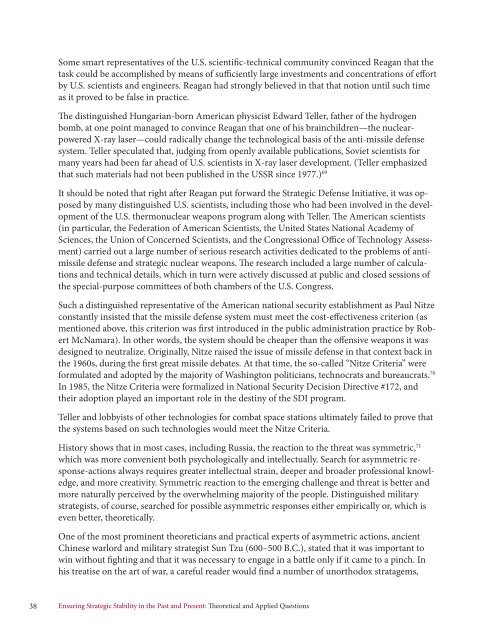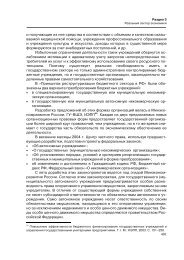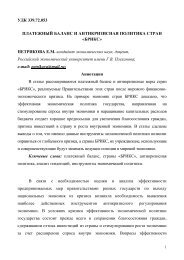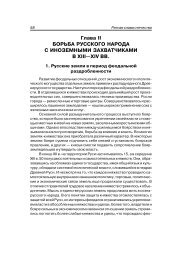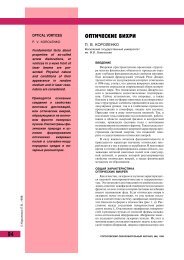Ensuring Strategic Stability in the Past and Present:
Ensuring Strategic Stability in the Past and Present:
Ensuring Strategic Stability in the Past and Present:
You also want an ePaper? Increase the reach of your titles
YUMPU automatically turns print PDFs into web optimized ePapers that Google loves.
Some smart representatives of <strong>the</strong> U.S. scientific-technical community conv<strong>in</strong>ced Reagan that <strong>the</strong>task could be accomplished by means of sufficiently large <strong>in</strong>vestments <strong>and</strong> concentrations of effortby U.S. scientists <strong>and</strong> eng<strong>in</strong>eers. Reagan had strongly believed <strong>in</strong> that that notion until such timeas it proved to be false <strong>in</strong> practice.The dist<strong>in</strong>guished Hungarian-born American physicist Edward Teller, fa<strong>the</strong>r of <strong>the</strong> hydrogenbomb, at one po<strong>in</strong>t managed to conv<strong>in</strong>ce Reagan that one of his bra<strong>in</strong>children—<strong>the</strong> nuclearpoweredX-ray laser—could radically change <strong>the</strong> technological basis of <strong>the</strong> anti-missile defensesystem. Teller speculated that, judg<strong>in</strong>g from openly available publications, Soviet scientists formany years had been far ahead of U.S. scientists <strong>in</strong> X-ray laser development. (Teller emphasizedthat such materials had not been published <strong>in</strong> <strong>the</strong> USSR s<strong>in</strong>ce 1977.) 69It should be noted that right after Reagan put forward <strong>the</strong> <strong>Strategic</strong> Defense Initiative, it was opposedby many dist<strong>in</strong>guished U.S. scientists, <strong>in</strong>clud<strong>in</strong>g those who had been <strong>in</strong>volved <strong>in</strong> <strong>the</strong> developmentof <strong>the</strong> U.S. <strong>the</strong>rmonuclear weapons program along with Teller. The American scientists(<strong>in</strong> particular, <strong>the</strong> Federation of American Scientists, <strong>the</strong> United States National Academy ofSciences, <strong>the</strong> Union of Concerned Scientists, <strong>and</strong> <strong>the</strong> Congressional Office of Technology Assessment)carried out a large number of serious research activities dedicated to <strong>the</strong> problems of antimissiledefense <strong>and</strong> strategic nuclear weapons. The research <strong>in</strong>cluded a large number of calculations<strong>and</strong> technical details, which <strong>in</strong> turn were actively discussed at public <strong>and</strong> closed sessions of<strong>the</strong> special-purpose committees of both chambers of <strong>the</strong> U.S. Congress.Such a dist<strong>in</strong>guished representative of <strong>the</strong> American national security establishment as Paul Nitzeconstantly <strong>in</strong>sisted that <strong>the</strong> missile defense system must meet <strong>the</strong> cost-effectiveness criterion (asmentioned above, this criterion was first <strong>in</strong>troduced <strong>in</strong> <strong>the</strong> public adm<strong>in</strong>istration practice by RobertMcNamara). In o<strong>the</strong>r words, <strong>the</strong> system should be cheaper than <strong>the</strong> offensive weapons it wasdesigned to neutralize. Orig<strong>in</strong>ally, Nitze raised <strong>the</strong> issue of missile defense <strong>in</strong> that context back <strong>in</strong><strong>the</strong> 1960s, dur<strong>in</strong>g <strong>the</strong> first great missile debates. At that time, <strong>the</strong> so-called “Nitze Criteria” wereformulated <strong>and</strong> adopted by <strong>the</strong> majority of Wash<strong>in</strong>gton politicians, technocrats <strong>and</strong> bureaucrats. 70In 1985, <strong>the</strong> Nitze Criteria were formalized <strong>in</strong> National Security Decision Directive #172, <strong>and</strong><strong>the</strong>ir adoption played an important role <strong>in</strong> <strong>the</strong> dest<strong>in</strong>y of <strong>the</strong> SDI program.Teller <strong>and</strong> lobbyists of o<strong>the</strong>r technologies for combat space stations ultimately failed to prove that<strong>the</strong> systems based on such technologies would meet <strong>the</strong> Nitze Criteria.History shows that <strong>in</strong> most cases, <strong>in</strong>clud<strong>in</strong>g Russia, <strong>the</strong> reaction to <strong>the</strong> threat was symmetric, 71which was more convenient both psychologically <strong>and</strong> <strong>in</strong>tellectually. Search for asymmetric response-actionsalways requires greater <strong>in</strong>tellectual stra<strong>in</strong>, deeper <strong>and</strong> broader professional knowledge,<strong>and</strong> more creativity. Symmetric reaction to <strong>the</strong> emerg<strong>in</strong>g challenge <strong>and</strong> threat is better <strong>and</strong>more naturally perceived by <strong>the</strong> overwhelm<strong>in</strong>g majority of <strong>the</strong> people. Dist<strong>in</strong>guished militarystrategists, of course, searched for possible asymmetric responses ei<strong>the</strong>r empirically or, which iseven better, <strong>the</strong>oretically.One of <strong>the</strong> most prom<strong>in</strong>ent <strong>the</strong>oreticians <strong>and</strong> practical experts of asymmetric actions, ancientCh<strong>in</strong>ese warlord <strong>and</strong> military strategist Sun Tzu (600–500 B.C.), stated that it was important tow<strong>in</strong> without fight<strong>in</strong>g <strong>and</strong> that it was necessary to engage <strong>in</strong> a battle only if it came to a p<strong>in</strong>ch. Inhis treatise on <strong>the</strong> art of war, a careful reader would f<strong>in</strong>d a number of unorthodox stratagems,38<strong>Ensur<strong>in</strong>g</strong> <strong>Strategic</strong> <strong>Stability</strong> <strong>in</strong> <strong>the</strong> <strong>Past</strong> <strong>and</strong> <strong>Present</strong>: Theoretical <strong>and</strong> Applied Questions


